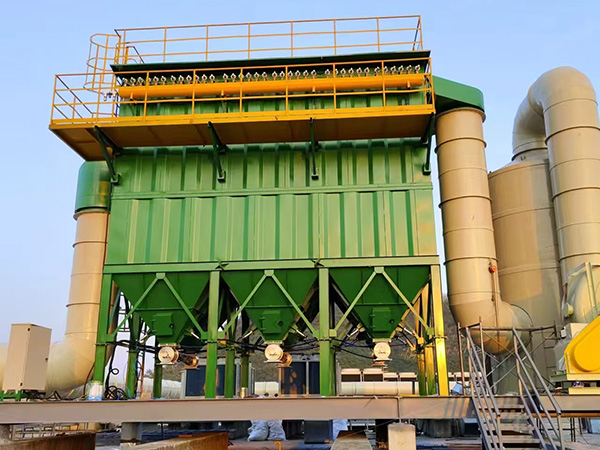-
All
-
bag Dust Collector
-
Electrostatic Precipitator
-
Cartridge Dust Collector
-
Desulfurization And Denitrification Equipment
-
Dust Collector Bag
-
Dust Collector Skeleton
-
Electromagnetic Pulse Valve
-
Rotary Valve
-
Screw Conveyor
-
Dust Conditioner
-
Plug Valve/Butterfly Valve
-
Scraper Conveyor
-
Catalytic Oxidizer
-
Cyclone Dust Collector
-
Sintered Plate Dust Collector
-
Spray Tower
-
Activated Carbon Adsorber
-
Light Oxygen Purifier
-
Dry Filter Box
-
Bucket Elevator

Bag Filter
Bag filter is an industrial dust removal equipment that relies on filter bag media to achieve dust separation. ...
Bag filter is an industrial dust removal equipment that relies on filter bag media to achieve dust separation. Its core advantages are good dust removal effect, wide adaptability to dust types, and stable operation. It is widely used in industries such as power, building materials, machinery, chemical, and grain. It can handle gases with dust concentrations of 50-3000g/m ³ and air flow rates of 200-200000m ³/h. The filtration efficiency of dust particles with a diameter of 0.3 μ m or more generally exceeds 90%. It is the core equipment for industrial industries to achieve dust emission standards and actual air quality. According to application scenarios, it can be divided into multiple categories such as single machine, online cleaning, and offline cleaning.
From a general structure perspective, the core of various bag filters consists of a filtration unit, an ash cleaning system, an airflow distribution device, an ash hopper, and an ash discharge component, with only differences in scale and detailed design. The filtration unit is the core, with filter bags as the core medium. The material of the filter bags is selected according to the working conditions: polyester fiber filter bags are selected for ordinary dry dust, PPS and aramid filter bags are selected for high temperature (≤ 280 ℃) scenarios, and PTFE filter bags are selected for high corrosive environments. The filter bags are fixed on the filter bag flower plate by clamps or spring expansion rings to confirm airtightness; The dust cleaning system is crucial and can be divided into three categories: manual vibration, online pulse spraying, and offline pulse spraying. Manual vibration is suitable for low air volume scenarios, while online spraying does not require shutdown but is prone to secondary dust. Offline spraying isolates and cleans dust through separate compartments, resulting in stable purification efficiency; The airflow distribution device optimizes the direction of dusty airflow through guide plates and porous plates, avoiding direct erosion of the filter bag by airflow and local wear. At the same time, it confirms that the airflow passes evenly through the filter bag, improving overall filtration efficiency; Ash hoppers are often designed in a conical or square shape, with star shaped discharge valves, screw conveyors, and other ash discharge components at the bottom. Some large models may also be equipped with heating or arch breaking devices to prevent dust condensation and bridging.
Its general working principle is based on "physical interception+dust initial layer filtration": after the dusty gas enters the equipment through the air inlet, it is guided by the airflow distribution device and evenly passes through the outer side (external filtration type) or inner side (internal filtration type) of the filter bag. The dust is intercepted by the filter bag fibers, inertial collision or diffusion adsorption, gradually forming a "dust initial layer" on the surface of the filter bag; As the initial layer of dust thickens, the filtration efficiency is further improved. The purified gas passes through the filter bag and enters the clean air chamber, and is discharged through the air outlet; When the accumulation of dust on the surface of the filter bag causes the resistance of the equipment to rise to the set value (usually 1200-1800Pa), the dust cleaning system starts and peels off the dust on the surface of the filter bag through vibration, pulse blowing, and other methods. The dust falls into the ash hopper and is discharged through the ash discharge component, completing the production of the filter bag and restoring the normal filtering state of the equipment.







